People see hundreds of ads a day. We are constantly bombarded with ads on social media, TV, search engines, driving down the highway, interrupting our podcasts… We can’t escape ads, so we’ve learned to tune them out. People need to see an ad several times to remember it and even more to convert. So, how can you make sure your audience remembers your ads?
Introducing rich media ads!
Rich media ads use different media forms to capture customers’ attention. They are a highly effective way to stand out among the noise. Let’s chat about how you can use rich media ads to attract and convert your ideal clients.
What are Rich Media Ads?
Rich media ads go beyond static or text-based ads. They utilize rich media such as video, audio, animation, clickable sections, or expanding formats to encourage users to engage with the ad.
Traditional ads are limited by a single image or text, which can drive real results. So, I’m not knocking simple paid ads at all! I want to introduce you to rich media ads to show how you can creatively use interactive elements to deliver a different experience for your audience.
Here are some key features:
- Incorporate multiple content types
- Encourage user interaction
- Offer more creative flexibility to tell a story or showcase products
- Allow for more advanced tracking, measuring clicks, interactions, time spent, and engagement levels
Ready to try them out? There are several types of rich media ads to choose from that incorporate these creative elements.
5 Types of Rich Media Ads
There are various formats of rich media ads to choose from. Each is designed to capture attention, encourage interaction, and enhance the user experience.
Expanding Ads
Expanding ads are perfect for product showcases, storytelling, or interactive product demos. They use a smaller banner that expands into a larger one when a user hovers, clicks, or scrolls through the ad. Expanding ads are nice because they start small and become more engaging once a user interacts.
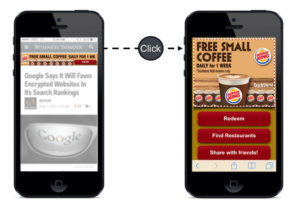
Photo: FUN Mobility
Video Ads
These are ads that embed video into the ad space. Sometimes, they have interactive elements like clickable buttons or product links. Video ads are mostly used as YouTube ads or on social media and websites with video-friendly placements. We know videos are very engaging for people because you can incorporate storytelling and visual aspects, so these typically perform well!
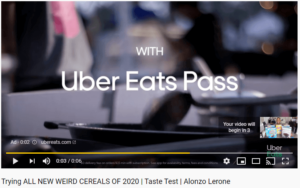
Photo: WebFX
Carousel Ads
E-commerce and real estate brands use these ads a lot! With carousel ads, you can swipe through multiple panels with images, videos, or product descriptions. They allow you to showcase multiple products or features within a single ad. If you have a lot to share about your product, service, or business, these ads are the best option!
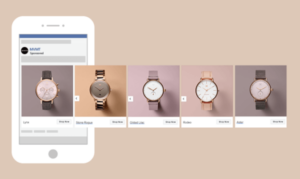
Photo: Creatopy
Social Media Ads
These rich media ads are for social media platforms. They use a combination of video, animations, stickers, polls, and swipe features. I bet you’ve seen these in Instagram stories or TikTok ads! Since they’re integrated into user’s feeds, they’re easy for users to interact with.
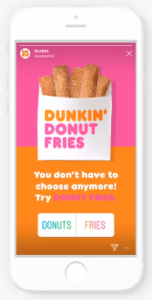
Photo: Instapage
Dynamic Ads
We all love a little personalization, even if it feels like you’re being stalked online! Dynamic ads adapt their content based on a user’s browsing behavior, location, or demographics. They often feature product recommendations, location-based offers (hello, micro-proximity marketing!), or recently viewed items.
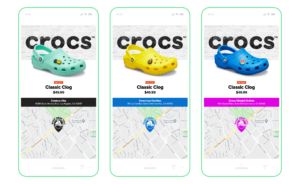
Photo: Hunch Ads
Benefits of Rich Media Ads
So why would you use rich media ads over traditional text-based or static ads? First, they are shown to have increased engagement, user experience, and interaction rates. People naturally tend to pause their scrolling when they see movement. Videos or animation stop the scroll long enough for them to digest the content and offer in the ad. This also leads to a higher conversion rate.
With rich media, you can incorporate storytelling techniques. We know storytelling is an effective copywriting strategy because people connect with stories more than facts. You only have so much space and time to connect with a customer in an ad. Interactive elements in rich media ads help you share a relatable story rather than spew facts at them.
Best Practices for Creating Rich Media Ads
Before you go off to create rich media ads for your business, keep these best practices in mind. Don’t want to waste your time or money by not thinking about the user experience!
ALWAYS always always prioritize mobile-first design. It’s much more likely that your audience will see your rich media ad on their mobile devices. Make sure your ads work correctly on mobile and the experience is seamless.
With that in mind, balance creativity with user experience. Sometimes, our creativity can go wild and overwhelm people. Keep it simple and creative.
Use clear CTAs within your interactive elements. Don’t forget that the purpose of your rich media ad is to convert users, not just give them a fun experience.
Consider the holistic customer journey behind your paid ads. What happens after they click the CTA? Is the landing page optimized for conversions? Do you have an automated email sequence set up after they submit a form? Think about the experience you want your audience to have with your ad and business.
Finally, test and optimize your ads based on the analytics. Rich media ads give you a lot of metrics to work with, so adjust your creatives accordingly to get the best ROI.
Are Rich Media Ads Right for Your Business?
Do you want to try some rich media ads for your business? They can be a highly effective way to engage new people and introduce them to your products or services. Being creative with your ads is crucial for a positive ROI, but it can look different. Your creativity is unlimited, so experiment with expanding, video, carousel, social, and dynamic rich media ads.
And if you have no idea where to start, let’s hop on a call! I’m happy to plan your paid ads strategy, design the ad creative, and manage the entire process for you. You could be my next happy client!
